#NatureZen: Happiness is a Wealth of Birds
words and photos by Melissa McMasters
A recent study in Ecological Economics found that living in an area with a high diversity of birds is just as important to a person’s happiness as their income. “The happiest Europeans are those who can experience numerous different bird species in their daily life, or who live in near-natural surroundings that are home to many species,” said researcher Joel Methorst.
No wonder Overton Park makes us so happy.
With nearly 200 species recorded in the park on eBird, Overton Park is an oasis of bird diversity right in the middle of the city. And winter is a wonderful time to see our resident species. With the leaves off the trees, it’s easy to spot birds who might otherwise be hiding. Here are a few winter birds to look out for.
The hermit thrush is a winter resident that loves the forest understory, where it hops and scrapes around in leaf litter in search of insects. Hermit thrushes can be distinguished by their reddish tails, but they’re also the only brown thrushes that spend their winters in the United States. In the summers they head north to Canada to breed.
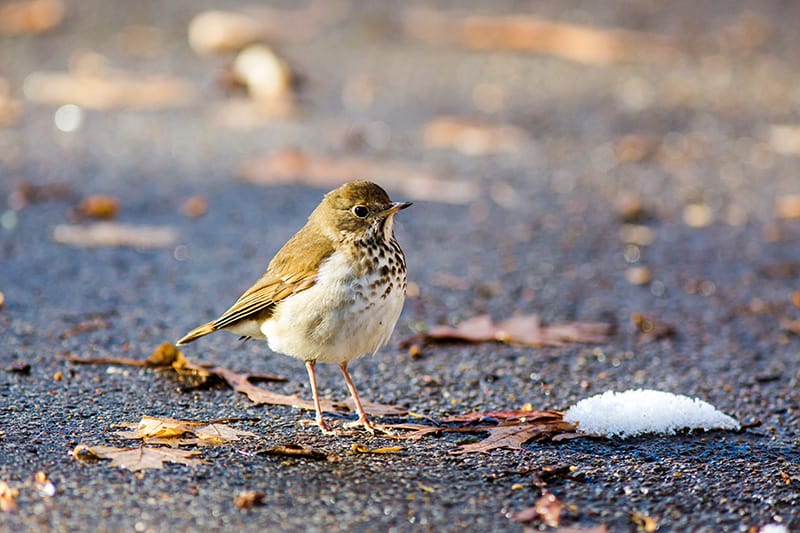
Want to train your eye to see brown creepers, tiny birds that blend right in with the mature trees they favor? Look at the bottom of a tree trunk and work your way up with your eyes, looking for movement. Brown creepers climb from the base of a tree up to the top, picking into crevices in search of insects, and then fly back down to start over.
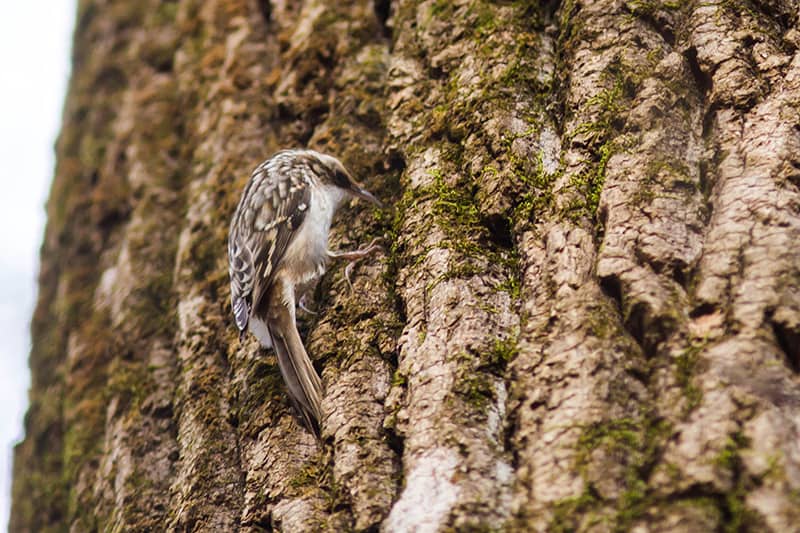
One of my favorite winter birds is the rusty blackbird. While most blackbirds you’ll see in the park in winter are common grackles, look closely for the pale yellow eye and rusty feathers of this bird. In the summer, the bird molts and loses its “rust,” appearing with smooth black feathers for the breeding season. The rusty blackbird is one of the fastest-declining birds in North America, with a population loss of more than 90% in the past 40 years. Habitat like the Old Forest provides a critical refuge.
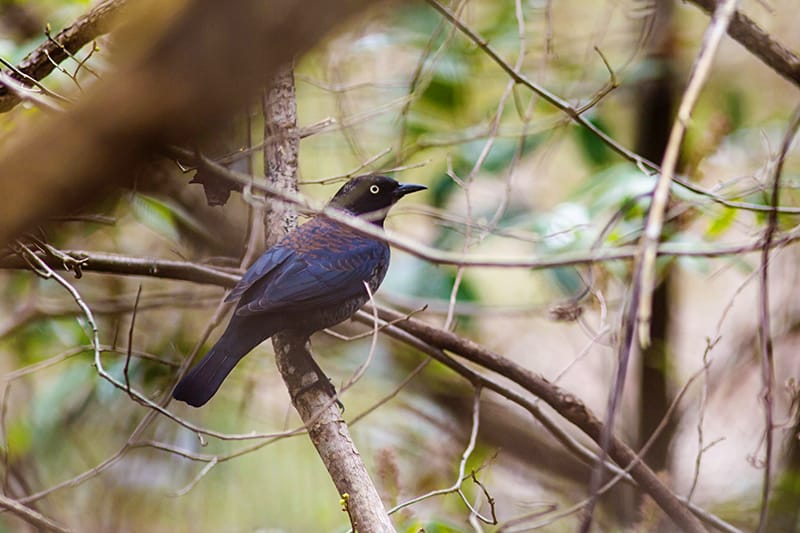
This season brings a second regular wren species into the park beyond our year-round resident Carolina wren. The winter wren is the size of a golf ball, has a tiny tail that’s always sticking up, and sounds like it’s spitting as it hops through vegetation. (“Scrobbling” is the word I use to describe the noise, but I’m not sure that’s scientifically recognized.) If you want to attract this bouncy little bird, leave some brush piles in your yard over the winter.
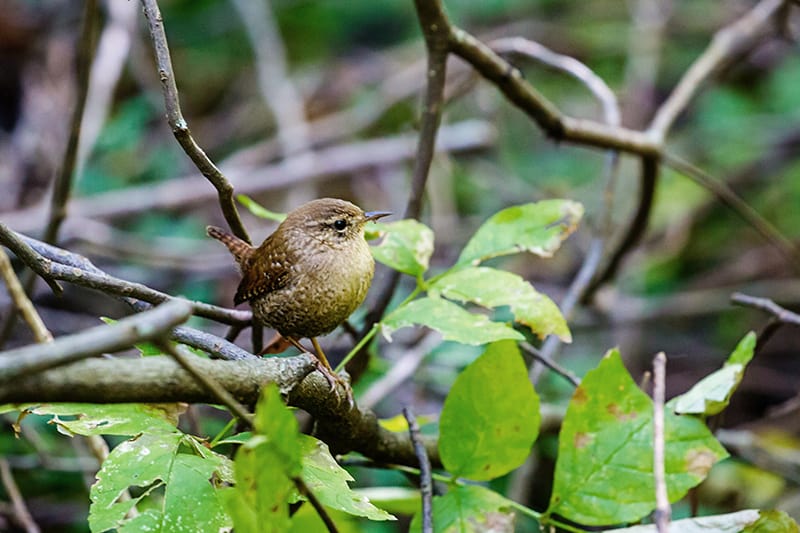
Not all our winter birds come in monochromatic shades. The cedar waxwing has a stunning lemon-yellow belly, a black mask, and the scarlet droplets on its wingtips that give it the name “waxwing.” Look for these birds eating berries and gathering in big groups, which you’ll often hear before you see. A low whining sound in the canopy often means there are lots of these birds nearby.

Another bird with a wash of lemon, the blue-headed vireo has what birders call “spectacles”: a bold white eyering connected to a spot leading to the bill. As shown below, they love the mature vines that characterize a habitat like the Old Forest.
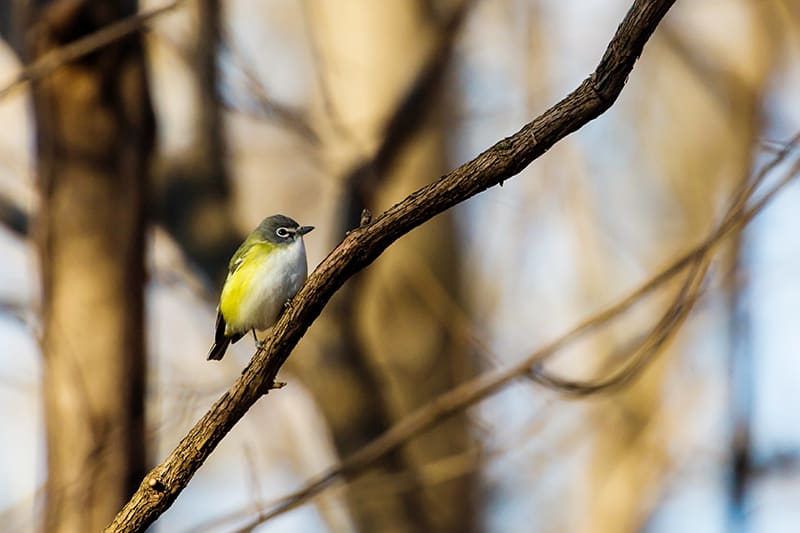
Easily the most colorful of our winter birds, the purple finch is distinguished from our year-round resident house finch by its raspberry (as opposed to strawberry) colored feathers, and by the bolder brown stripe behind its eye. Purple finches don’t always reach our area in the winter; they sometimes stay further north if food supplies are particularly good. We didn’t see any last year, for example, but have already had multiple sightings this winter. Put out sunflower seeds in your bird feeder and you may see them mixed in with the house finches.
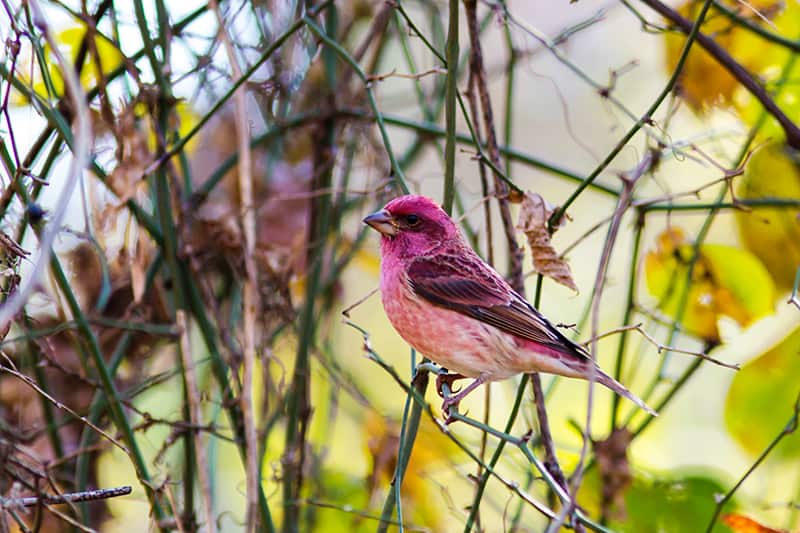
Finally, we come to the “crowned” birds–tiny balls of massive energy. The ruby-crowned kinglet is constantly hopping from branch to branch, flicking its wings. Listen for its raspy scolding call. If you’re lucky, you’ll get an actual glimpse of the ruby crown, which mostly stays hidden. I’ve found that the most reliable way to see it is to find two kinglets at the same time; they agitate each other so much that the crowns pop up!
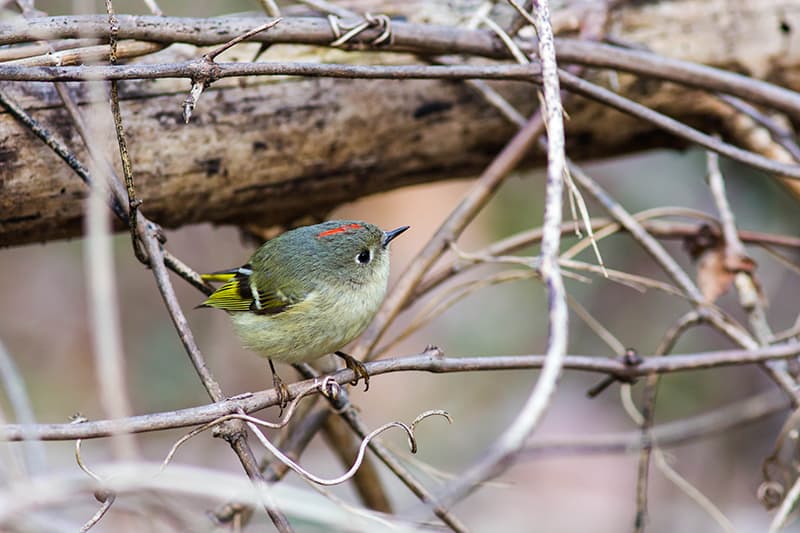
Golden-crowned kinglets are harder to spot than ruby-crowned kinglets, but they do offer more reliable views of the bright crests that give them their names. Where ruby-crowned kinglets are often lower to the ground, these birds forage higher up in trees. A good way to spot them is to listen for their very high-pitched call notes.
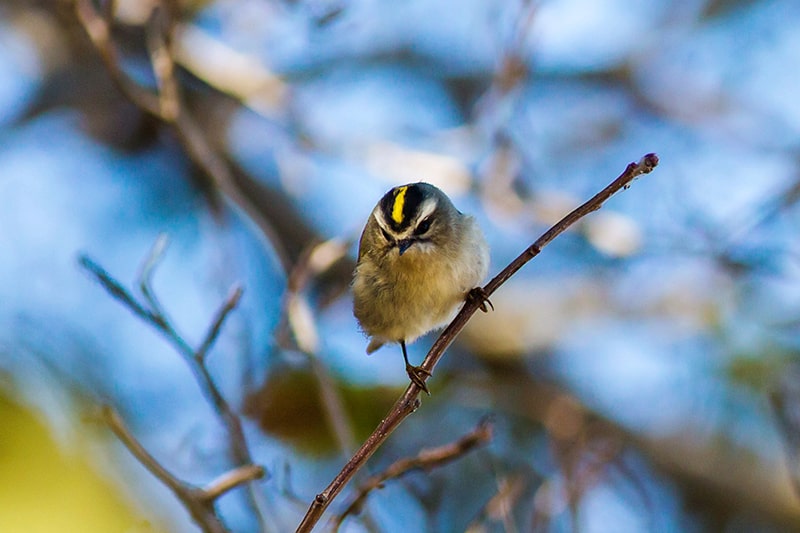
Last but not least is the orange-crowned warbler, a drab bird that can often be seen picking through curled-up leaves in search of insects. Much less flashy than the bright yellow warblers that migrate through in springtime, these warblers can be distinguished by their very pointy bills. Here’s one with a moth snack.
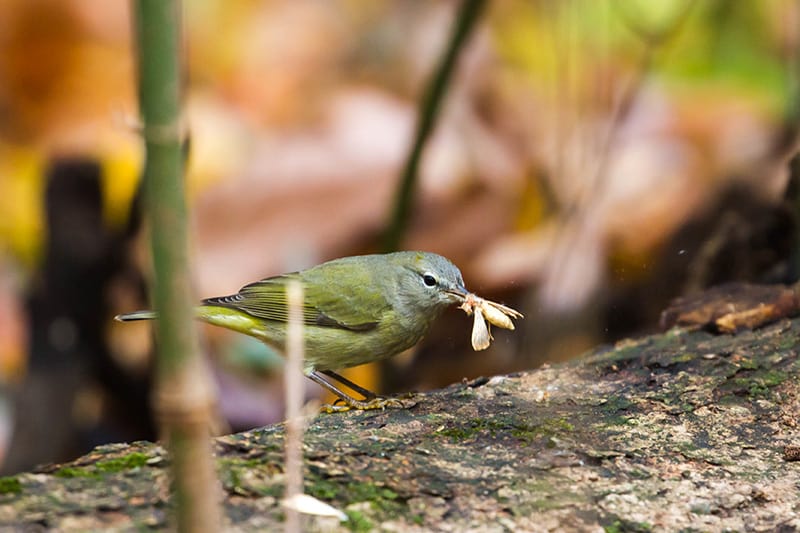
It’s a rare treat to see the orange crown on one of these birds, but I once spotted one taking a bath and got a glimpse. This photo sums up my feelings about 2020. We have been through the wringer!
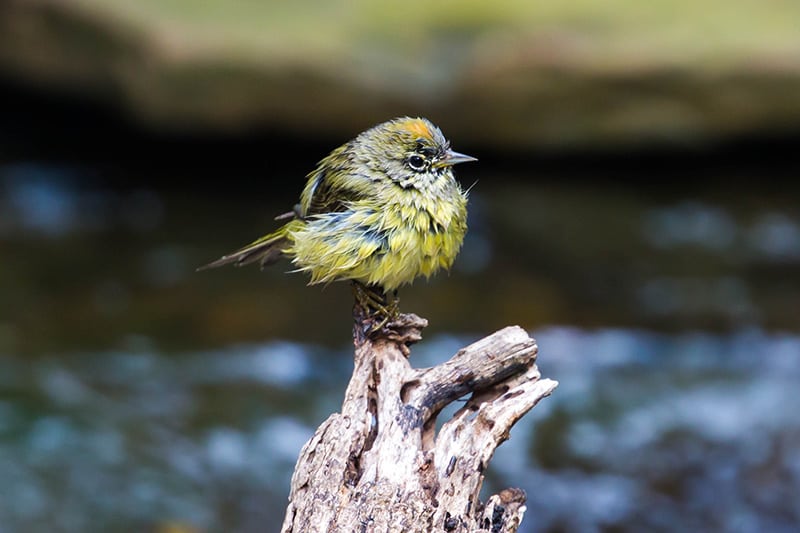
Winter is also a great time to watch woodpeckers and sparrows, and we’ve got handy #NatureZen guides to both.
Enjoy #NatureZen? Help preserve the habitat that allows us to see these beautiful creatures by making a gift to Overton Park Conservancy. Through December 31, our Board of Directors is doubling gifts up to $50,000!



